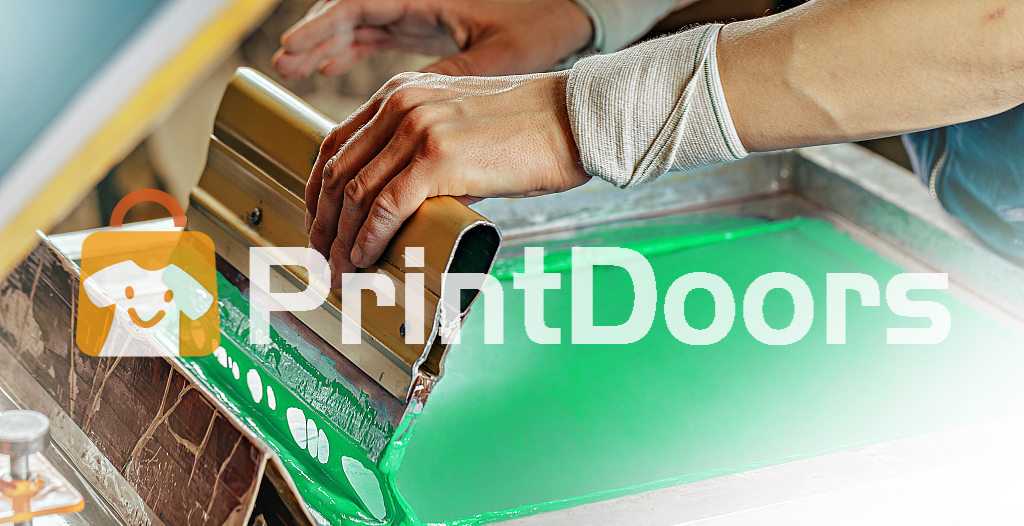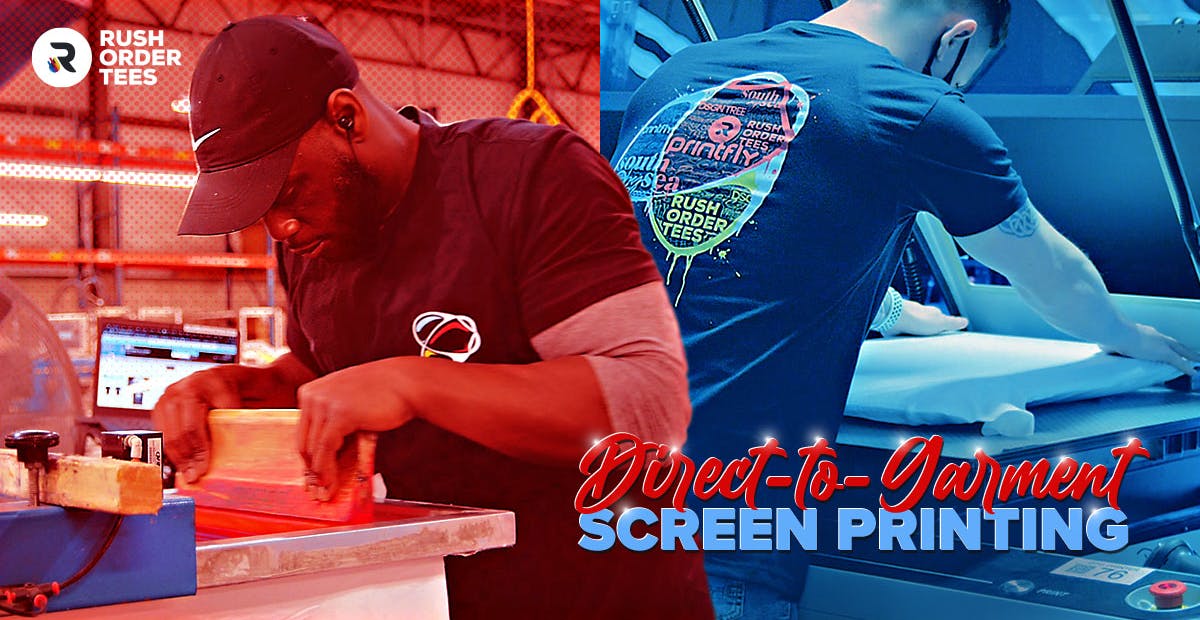Fascination About Tx Tees
Fascination About Tx Tees
Blog Article
What Does Tx Tees Mean?
Table of ContentsThe Single Strategy To Use For Tx TeesThe smart Trick of Tx Tees That Nobody is DiscussingThe 2-Minute Rule for Tx TeesThe smart Trick of Tx Tees That Nobody is DiscussingSee This Report on Tx TeesTx Tees Things To Know Before You Get ThisIndicators on Tx Tees You Should Know
That brings your total to roughly $1,900 before tax obligation and delivery. Accumulate other prices, like the variety of utilities it requires to run the store and the expense of ink and emulsion per layout. screen printer. Take the print below for example. This is a one-color picture, so the price of ink per shirt is about 20 cents.The solution needs to just be a couple of cents because you 'd just need to coat one display for this work. Generally, printers try to make up to 45% profit on a print job.

With DTF, you can publish a handful of tee shirts, or just one. Both display printing and DTF have their specific niches in the world.
Everything about Tx Tees
The very best means to recognize? Ask about and see what printing shop like yours are doing. t-shirt printing. Attempt both out and see which you like better
When you're selecting what kind of printing approach to make use of for printing your artwork layouts on your garments, it's important that you understand the differences in between these two methods so you can maximize results while lessening prices. Screen printing is one of the most commonly made use of strategy for publishing layouts on fabrics.
DTG printing is additionally called place or straight to garment printing due to the fact that it publishes just what is needed as opposed to making a screen as display printers do. https://canvas.instructure.com/eportfolios/2821438/Home/Get_Creative_with_TX_Tees_Your_Ultimate_Screen_Printing_Shop. Screen printing functions by display filler squeegee display printing ink screen mesh display, after that moving the image to garment using warm and/or pressure
The DTG printer makes use of special dye-sublimation inks that are applied right into a pre-designed picture by an electronic printing system. The inks end up being part of the textile, enabling vibrant shades and outstanding detail. It's additionally understood as spot or straight to garment printing because it publishes only what is required as opposed to making a screen as display printers do.
Some Known Factual Statements About Tx Tees
Initially, it's much quicker - you can publish a fullcolor image in minutes, in contrast to hours for screen printing. Second, there's no set up time or prices included - you can print any type of style you such as, without having to develop a screen. Third, there's no waste - because screen printers screen print one design at once, they have to screen each color separately.
The paper is extremely expensive and can only be utilized when. Once it's printed on, it has actually to be disposed of. - The preliminary purchase cost is less than the upfront investment of DTG printers- You can print multi-color designs one screen at once as opposed to needing to print each color separately like DTG wikipedia reference printing.

Tx Tees for Beginners
Nonetheless, as opposed to utilizing display mesh as screen printers do, dye sublimation printers utilize laser technology to move your photos onto garments or paper. A warm procedure transfers the dye from its solid-state straight into the gas stage which in turn merges it onto fabric substratums when they are rapidly heated to high temperature levels under high stress.
Sublimation printing is environmentally friendly. It uses less water than screenprinting, and due to the fact that it does not include the usage of dangerous solvents, it's safe for all kinds of garments. The color sublimation inks are likewise odor-free when treated, unlike display printers that utilize dangerous chemicals throughout the display printing process that leave behind an undesirable smell.
They additionally conserve money on pricey tools like exposure systems considering that dye sublimation printers don't call for a UV exposure device or a flash treatment stove that is commonly utilized in display printing (screen printer). What is direct to garment printing (DTG Printing)? DTG printing is an electronic screenprinting procedure that prints straight onto fabric using specialized inkjet printers
10 Simple Techniques For Tx Tees
DTG printing uses numerous advantages over conventional screenprinting, including the ability to print photographic quality photos, higher shade vibrancy, and the capacity to publish layouts on darker textiles. DTG printers function by warming the fabric ink till it develops into a gas. The gas after that permeates the material, bonding with the fibers to create a permanent print.

Screen printers merely prepare their display then begin printing till they run out of product or ink.- There is a variety of knowledgeable screen printers around the globe, which can be practical for novices. - It's a slower procedure - screen printers frequently need to await the ink to dry prior to they can print the next color- Screen printers need hands-on labor, so there's a higher understanding curve and it takes longer to produce a high-quality design- Screen printing isn't as exact as DTG printing, so you might obtain some "blood loss" of shades from one component of the image onto an additional if not done appropriately.
Get This Report about Tx Tees
Nevertheless, rather than utilizing display mesh as display printers do, dye sublimation printers make use of laser modern technology to transfer your photos onto garments or paper. A heat procedure transfers the color from its solid-state directly into the gas phase which in turn fuses it onto material substrates when they are rapidly heated to heats under high pressure.
Sublimation printing is environment-friendly. It makes use of much less water than screenprinting, and because it doesn't include making use of hazardous solvents, it's secure for all sorts of clothing. The dye sublimation inks are likewise unsmelling when healed, unlike display printers that utilize unsafe chemicals throughout the screen printing procedure that leave behind an undesirable smell.
They additionally save cash on expensive devices like exposure systems since color sublimation printers do not require a UV direct exposure system or a flash remedy oven that is usually used in screen printing. What is straight to garment printing (DTG Printing)? DTG printing is a digital screenprinting procedure that publishes directly onto material making use of specialized inkjet printers.
Facts About Tx Tees Revealed
DTG printing supplies several benefits over standard screenprinting, consisting of the capability to print photo quality photos, greater color vibrancy, and the capacity to print styles on darker fabrics. DTG printers work by heating the fabric ink up until it becomes a gas. The gas then penetrates the textile, bonding with the fibers to create a permanent print.
Report this page